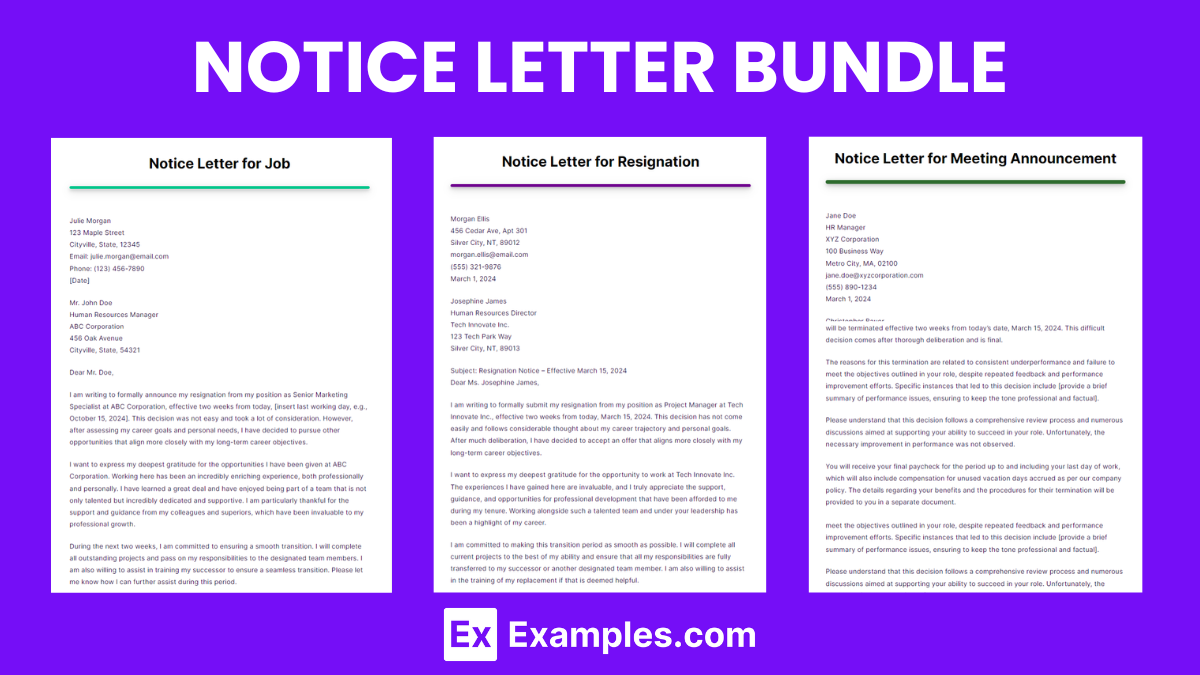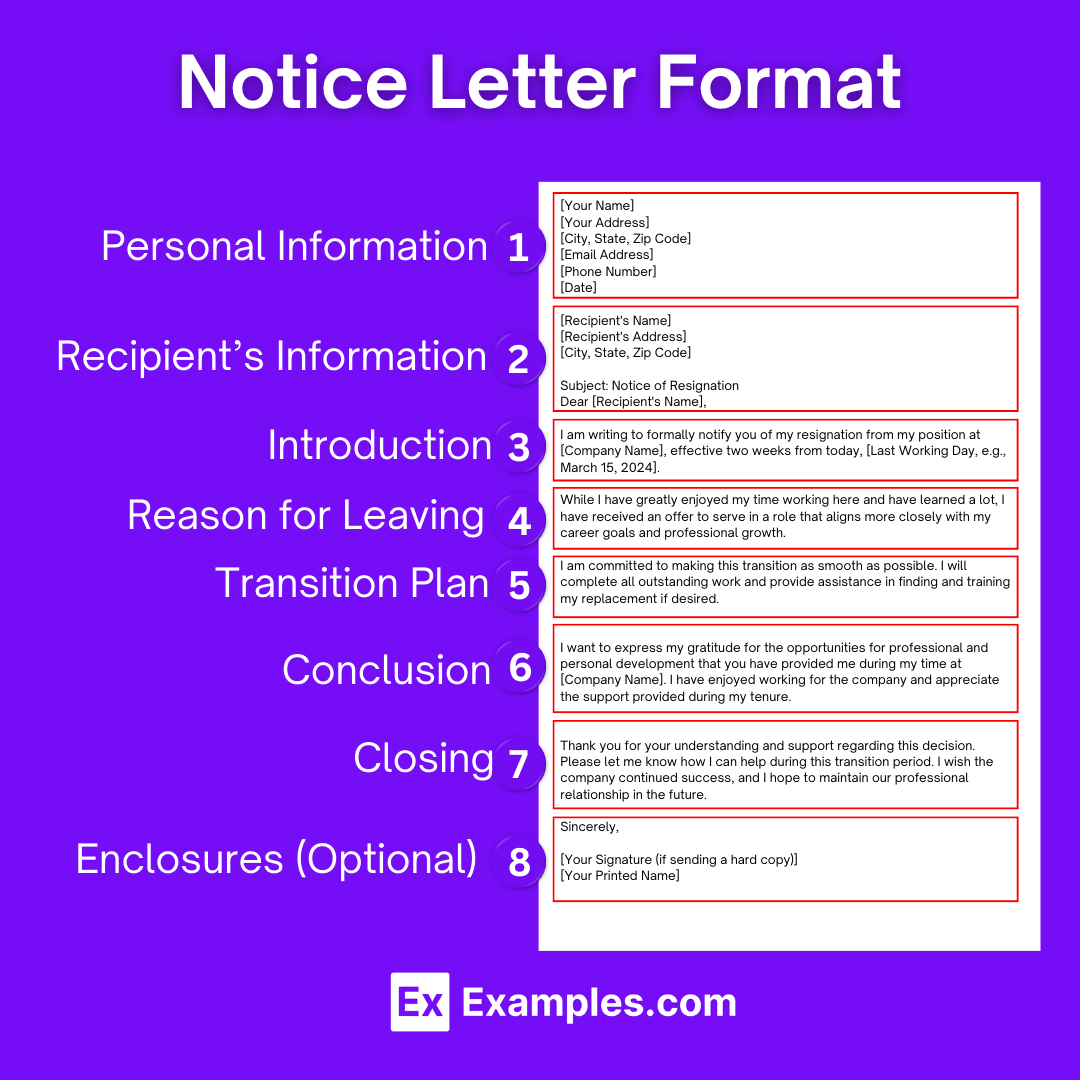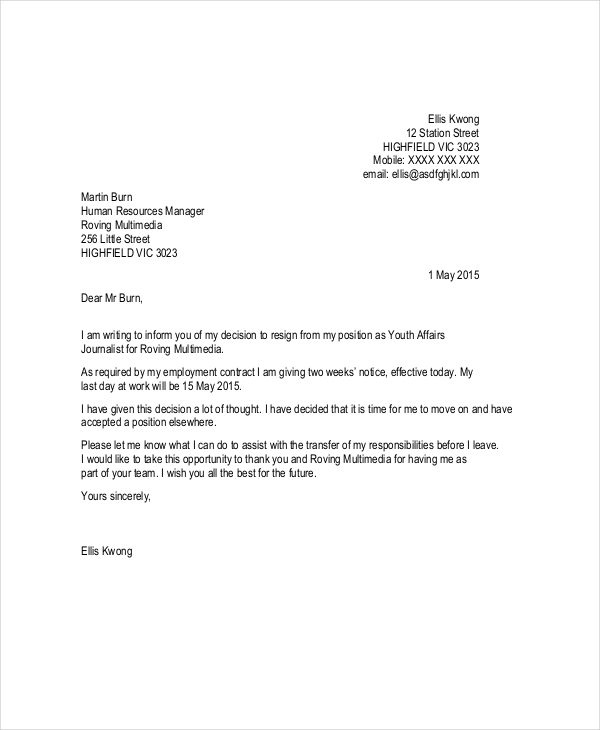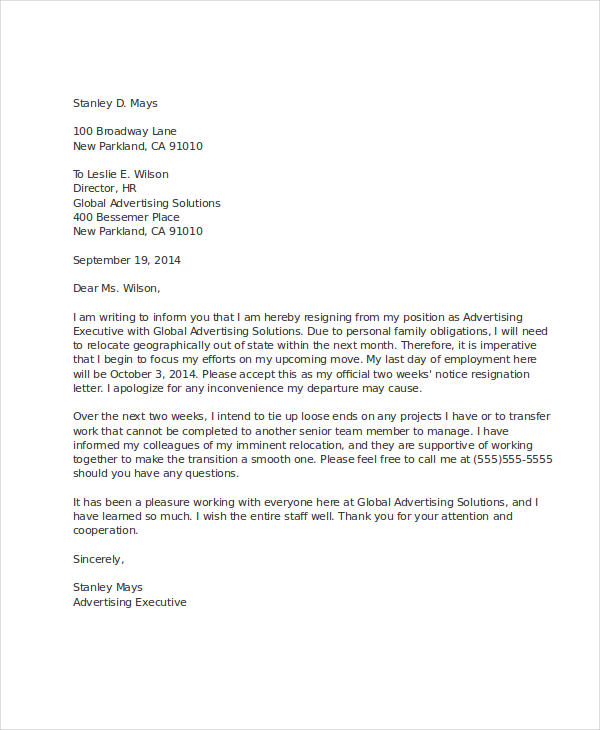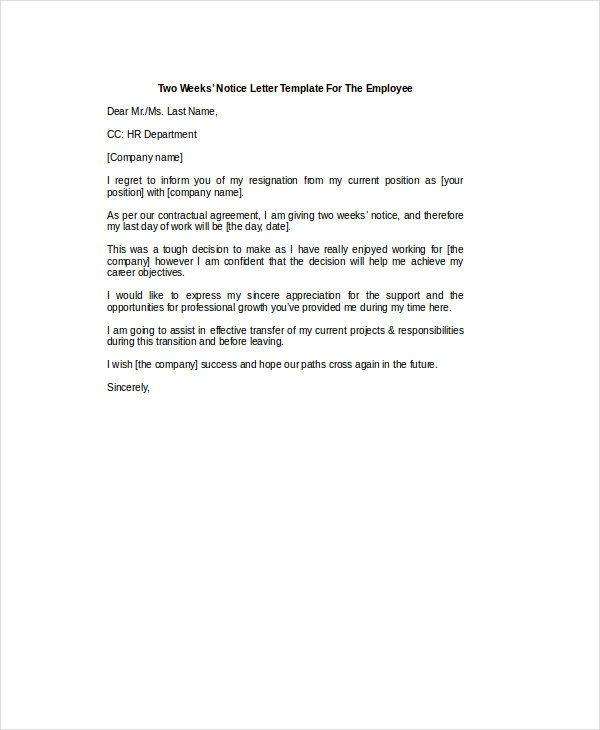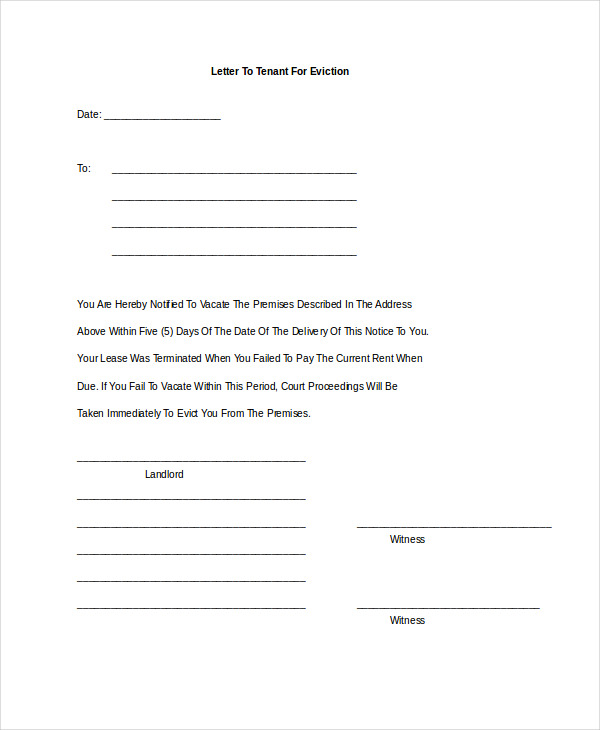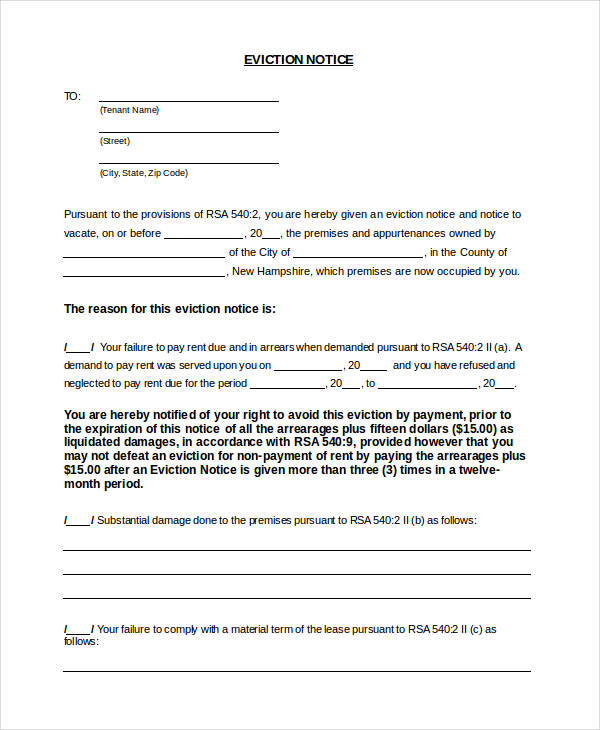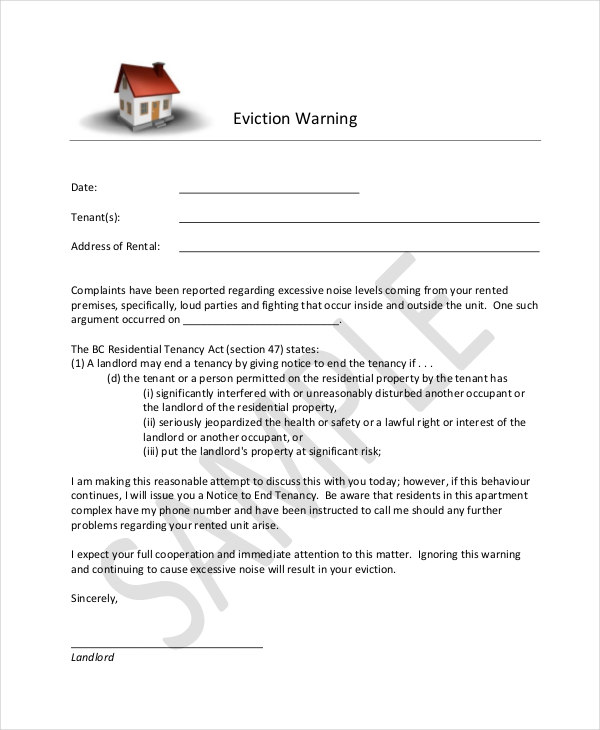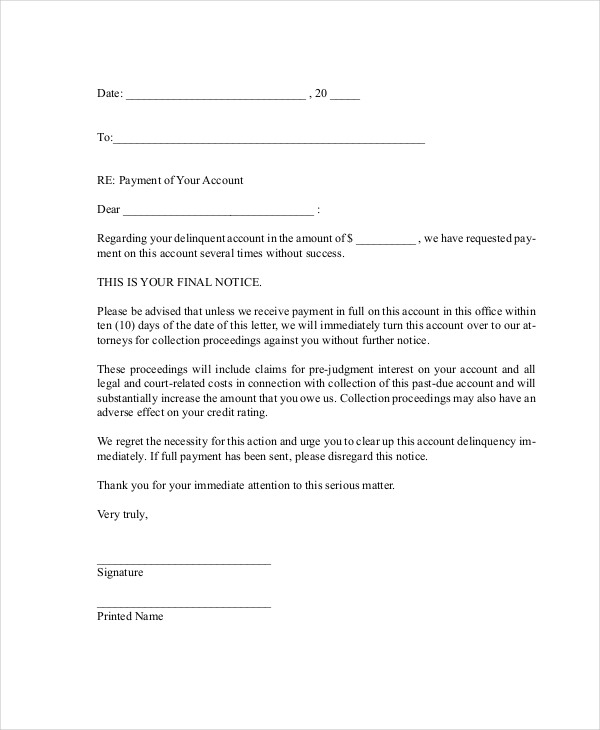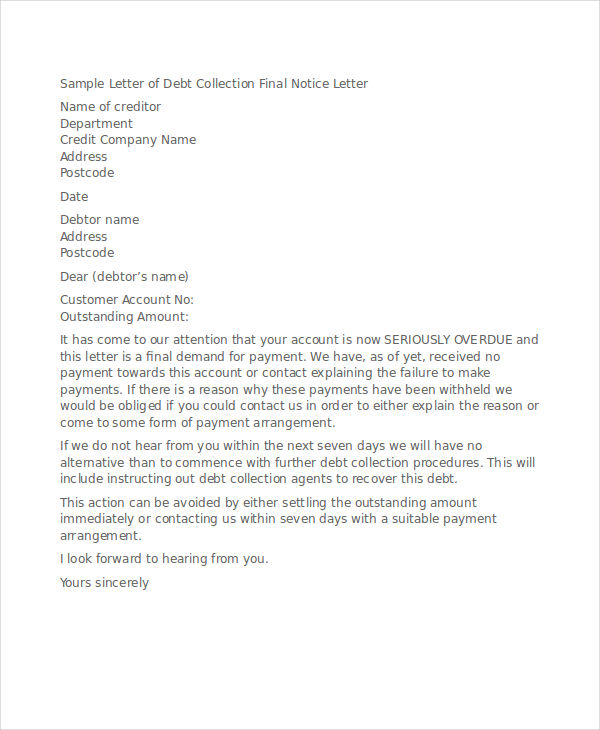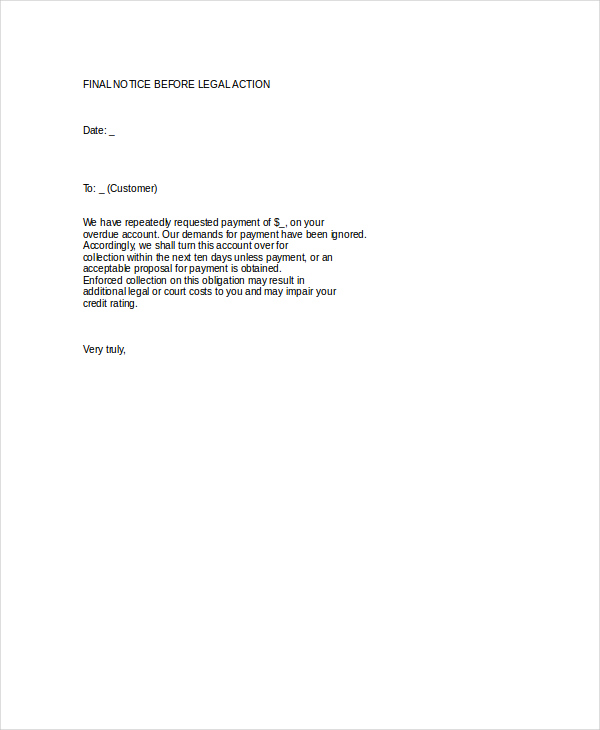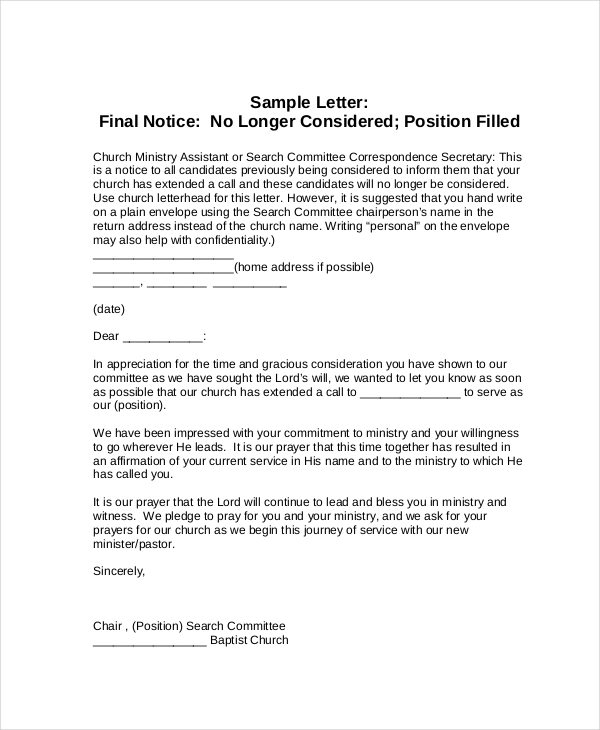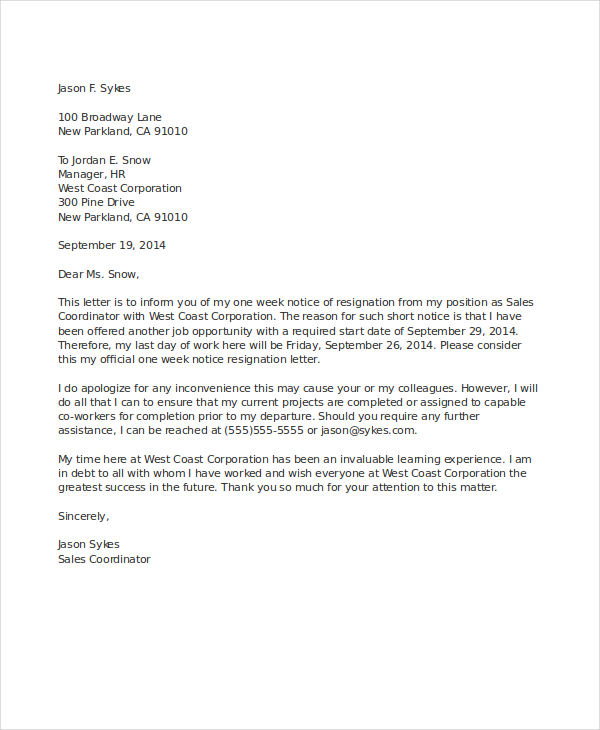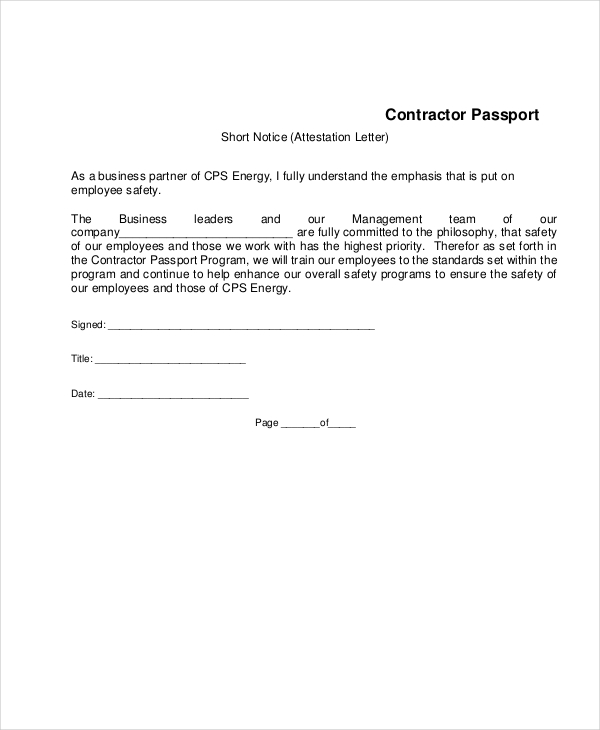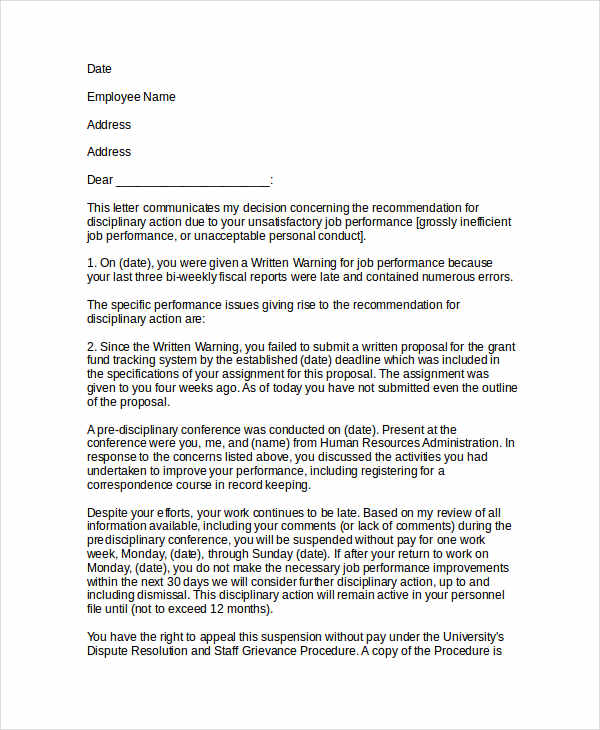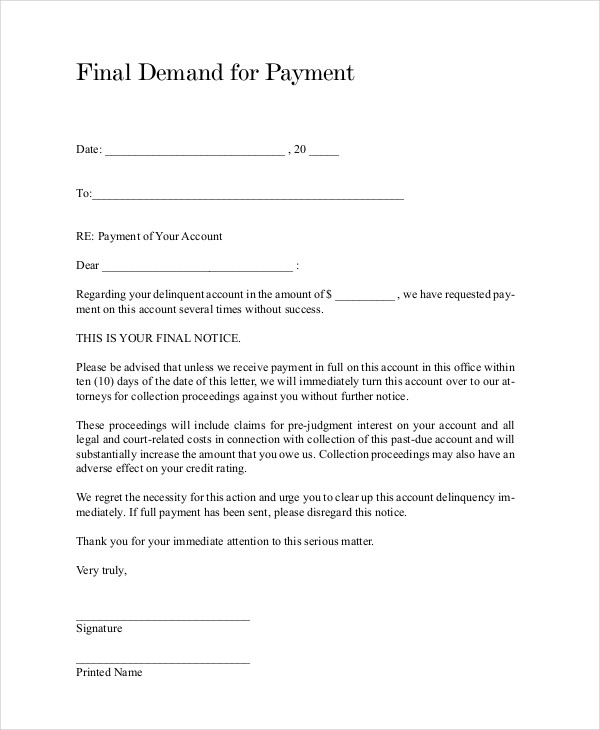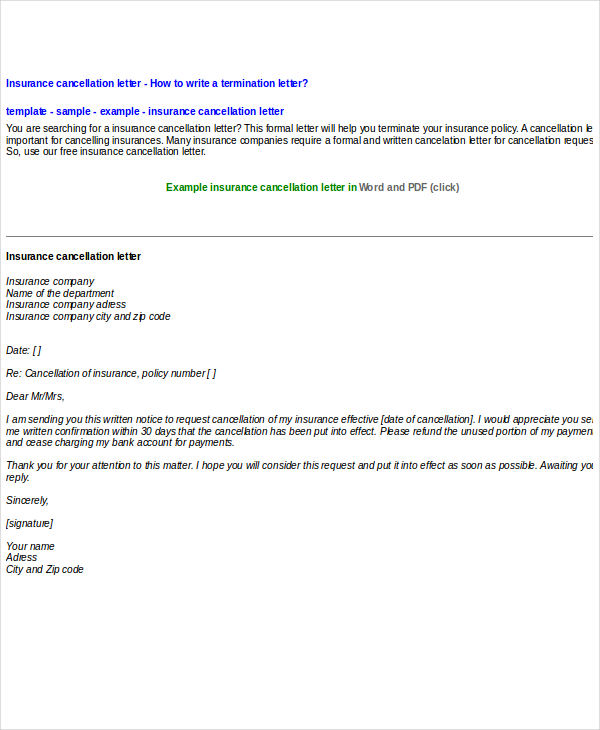50+ Notice Letter Examples to Download
The use of notice has become popular today, from announcing an event to notifying a tenant about vacating a property. That is because a notice is the most effective way to give out information. It is very short, brief, concise, and provides all the necessary information needed to make everything smooth.
One good reason for using a privacy notice is that it does not take up a huge space or needs a lots pages just for it to be effective. Some notices are just posted on a board and other notices appear in the smallest section of a newspaper, tabloids, and other publications.
What is Notice Letter?
A Notice Letter is a formal written document used to inform or notify an individual, organization, or other entities about a specific decision, action, or change. It serves various purposes, such as announcing resignation from a job, terminating a lease, cancelling a service, or any other significant notice that needs to be formally communicated. The letter provides a clear and documented way to convey intentions or changes, ensuring both parties are aware of the details and can act or respond accordingly. Notice letters are crucial in maintaining professional relationships, ensuring smooth transitions, and meeting legal or contractual obligations.
How to Write Notice Letter?
1. Start with Your Contact Information
- Sender’s Name: Your full name or the name of the entity sending the notice.
- Address: Your current address or the address of the entity.
- Date: The date the letter is written.
2. Include the Recipient’s Contact Information
- Recipient’s Name: The full name of the person or the name of the entity receiving the notice.
- Address: The recipient’s current address.
3. Add a Subject Line
A brief, clear statement summarizing the purpose of the letter (e.g., “Notice of Lease Termination,” “Resignation Effective [Date]”).
4. Salutation
Address the recipient formally using “Dear,” followed by their name or title (e.g., “Dear Mr. Smith,” or “Dear Hiring Manager,” if the name is unknown).
5. Body of the Letter
- Introduction: Start with a clear statement of the purpose of the letter. If applicable, mention any relevant reference or account number.
- Details: Provide the necessary details about the notice. This may include what is happening, when, and why. Be specific to avoid ambiguity.
- Action Required: If the notice requires the recipient to take any actions, clearly outline what they need to do and by when.
- Reference to Documents or Agreements: If relevant, refer to any documents or agreements related to the notice (e.g., contract clauses, previous agreements).
- Assistance Offer: If applicable, offer assistance or a point of contact for further questions or clarifications.
6. Closing
End the letter on a polite note, expressing appreciation for the recipient’s attention to the matter. Use formal closings such as “Sincerely,” “Best regards,” or “Yours faithfully,” followed by your signature (if sending a hard copy) and typed name. If you’re representing an entity, include your position or title.
7. Enclosures and Copies
- If you are including any documents with the letter, mention this by adding “Enclosure(s):” followed by a list of the enclosed documents.
- If you are sending copies to others, indicate this with a “cc:” (carbon copy) at the bottom of the letter, followed by the names and titles of the recipients.
Notice Letter Format
Sender’s Information
- Your name
- Your address (or your company’s address)
- Your contact information (phone number, email)
- Date of writing the letter
Recipient’s Information
- Recipient’s name
- Recipient’s address
- Recipient’s contact information (if known and relevant)
Salutation
- Formal greeting (e.g., Dear [Recipient’s Name],)
Subject Line (Optional but recommended)
- Concisely indicates the purpose of the letter (e.g., Notice of Lease Termination, Resignation Notice)
Body
- Introduction: Briefly state the purpose of the letter. If relevant, mention any related document or previous communication (e.g., As per our discussion, …).
- Details: Provide the specific details about the notice. This could include dates, reasons, and any other pertinent information. Ensure clarity and conciseness.
- Action Required: If the notice requires the recipient to take action, clearly state what is expected and by when.
Conclusion
- Summarize the notice, if necessary, and express appreciation for the recipient’s understanding or cooperation. Offer to provide further information or assistance if needed.
Closing
- Formal sign-off (e.g., Sincerely, Best regards,)
- Your signature (if sending a hard copy)
- Your printed name
- Your job title (if relevant)
- Enclosures (Optional)
- List any documents you are including with the letter (e.g., contract copies, previous correspondence).
Tips for Writing a Notice
It is very important that when you write a notice, it should have a complete information and must be written in a clear and comprehensive matter.
- An effective notice should have the following important information.
- Notice that calls for an official or non-official meeting agenda.
- Notice about issuing an event or informing about an upcoming event.
- Notice for lost and found itemNotice about a change of name
- Notice about an upcoming tour, fairs, camps (retreat agenda).
15+ Notice Letter Samples
- Rental Termination Notice Letter
- Two Weeks Notice Letter
- Notice Letter for Job
- Notice Letter for Work
- Notice Letter for Apartment
- Notice Letter for Landlord
- Notice Letter for Employer
- Notice Letter for Moving Out of Apartment
- Notice Letter for Leaving Job
- Notice Letter for Resignation
- Notice Letter for Tenant
- Notice Letter for Employment Termination
- Notice Letter for Meeting Announcement
- Notice Letter for Schedule Changes
- Notice Letter for Safety Violations
- Notice Letter for Event Cancellation
Different Notice Letter Examples & Templates
Lease Termination Notice Letter Template
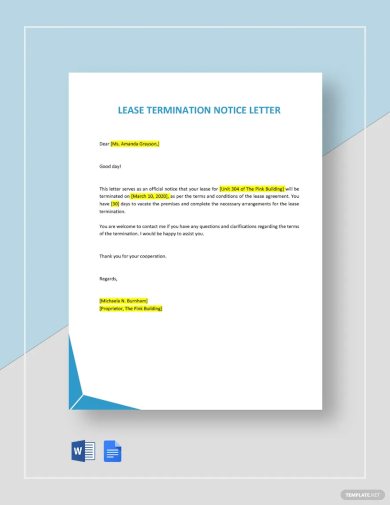
Termination Notice Letter Template
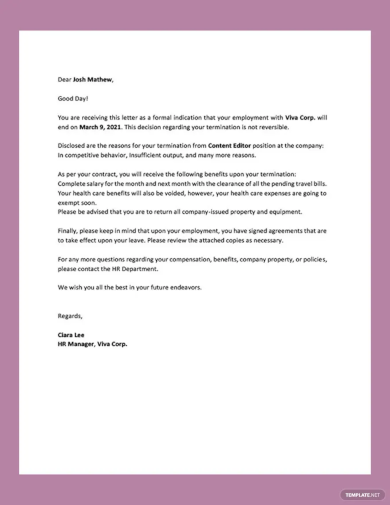
Simple Two Weeks Notice Letter Template
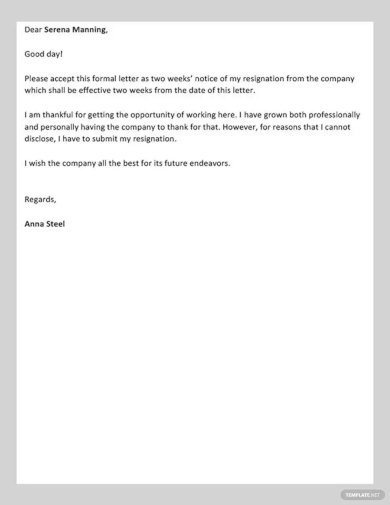
Two Weeks Notice Letter Template
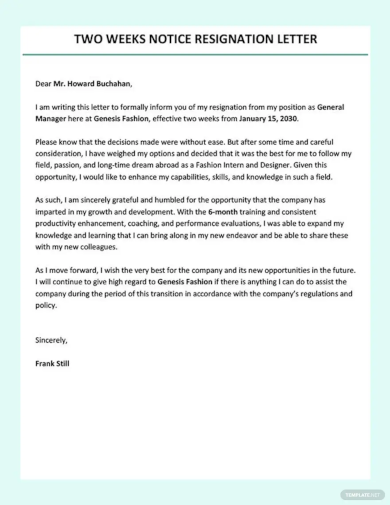
COVID-19 Eviction Notice Letter Template

Written Notice Letter Template
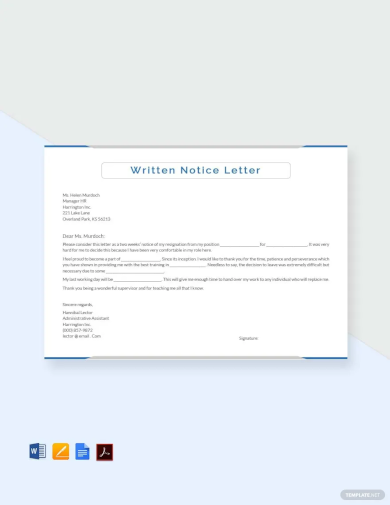
Free Freelance Notice Letter Template
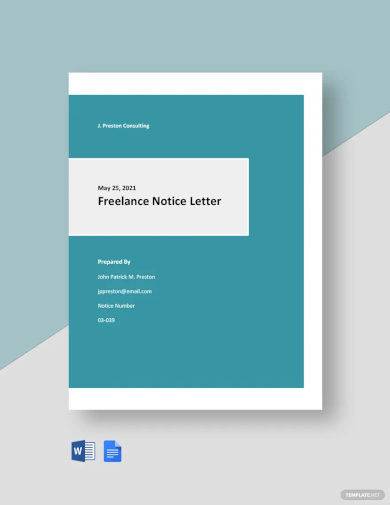
Free Work From Home Notice Letter Template
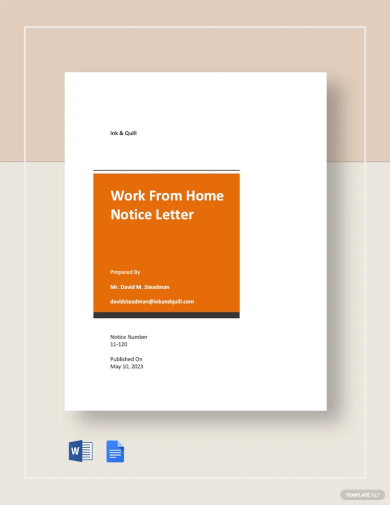
Free Letter Notice of Litigation Template
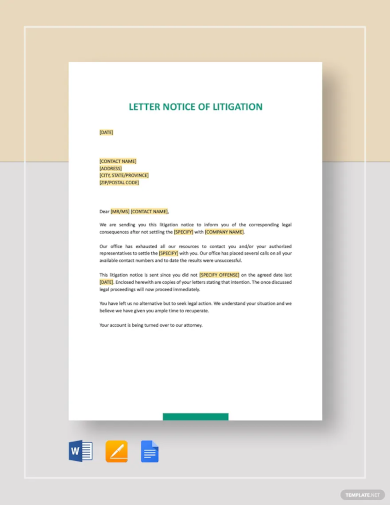
No Notice Resignation Letter Template

Short Notice Resignation Letter Template

Waiver of Notice Period Letter Template
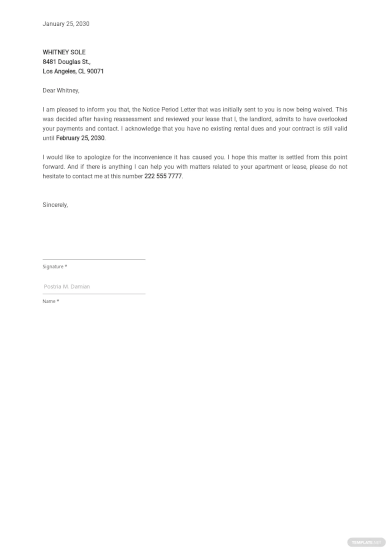
Two Weeks Notice Resignation Letter Template
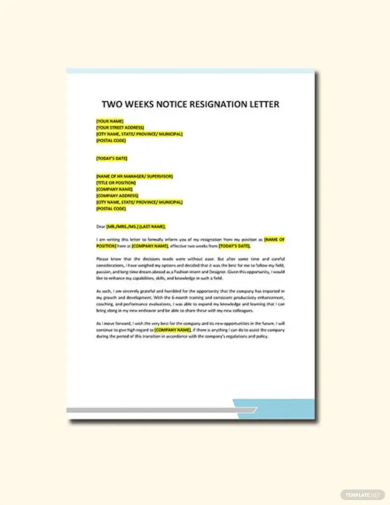
Letter of Notice to the Student Template
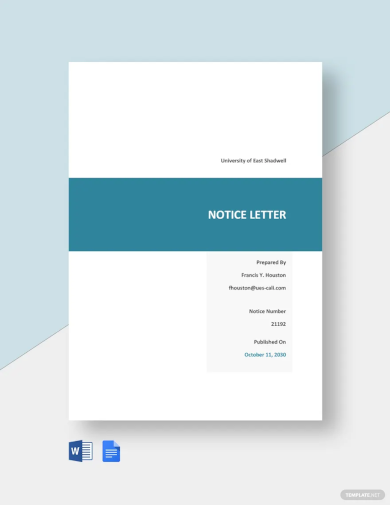
Notice of Retirement Letter to Employee Template
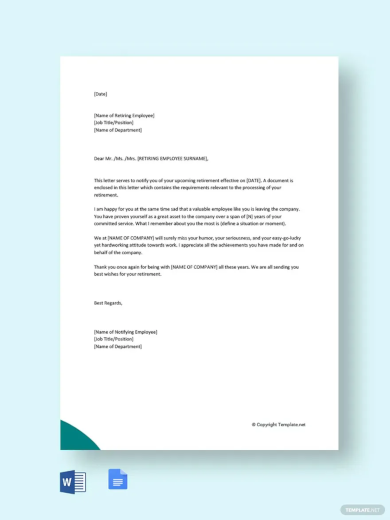
Notice Of Termination Letter Due To Poor Performance Template
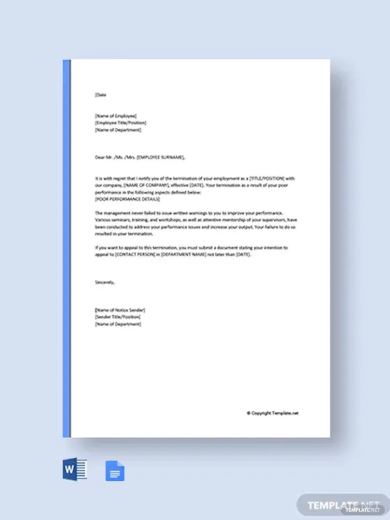
Notice to Vacate Letter Template
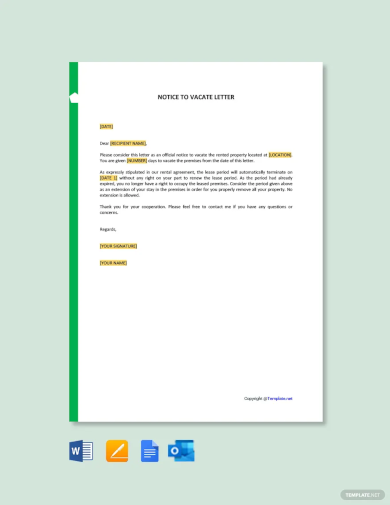
Free Notice of Cancellation Letter Template
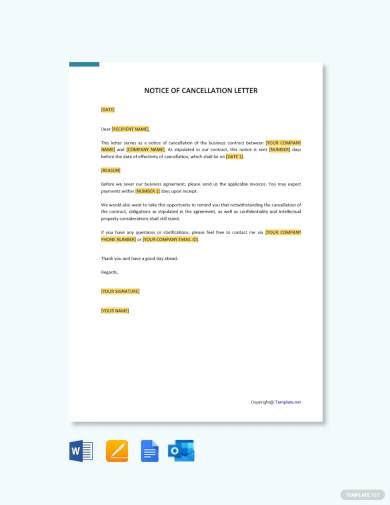
Landlord Notice To Vacate Letter Template

30 day notice to vacate letter Template
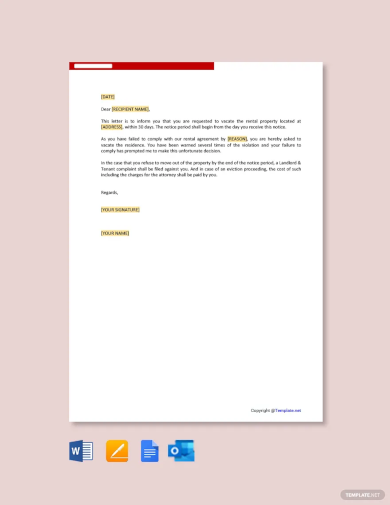
30 Day Notice To Vacate Letter To Roommate Template
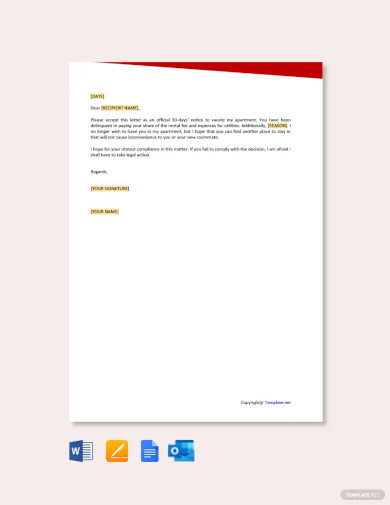
30 Day Notice of Cancellation Letter Template
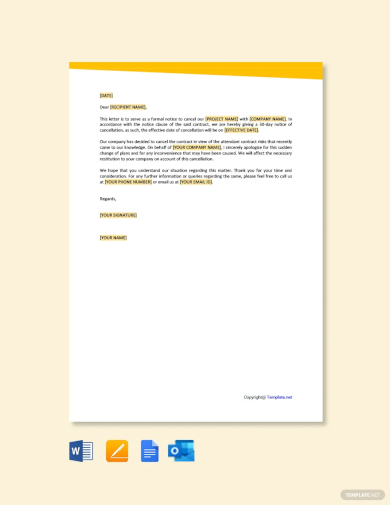
Two Weeks Notice Letter Examples
Two Weeks Notice Resignation
Professional Two Weeks Notice
Two Weeks Notice Letter for Employee
Eviction Notice Letters
Landlord Eviction Notice
Tenants Eviction Notice
Eviction Warning Letter
What Is a Notice?
A notice is a brief and concise informational material that is widely used to announce or inform the general public or specific group of people about an event, celebrations, occasions, or inaugurations.
A notice is also used to announce public functions, issue public instructions, and to make appeals or extend invitations. A notice is also used by the employer to employee terminate notice or used by landlords to evict a tenant.
Most notices are meant to be pinned up or posted in notice board or bulletin boards found in the company notice or organizations and in the school.
The Importance of a Notice
Below are the few reasons why a notice is very important.
- A notice can easily get the attention of the people.
- A notice can easily circulate important information.
- A notice provides all the necessary information needed without the use of a long and extensive material.
- A notice can easily notify a specific person regarding on his/her violations.
- A notice will make the announcement of an event or occasion seamless and smooth.
To give you more ideas on the importance of a notice and what it looks like, you can check our free notice examples here.
Final Notice Letters
Final Demand Notice
Final Debt Collection Notice
Legal Notice Letters
Legal Action Notice
Final Notice Letter
Formal Notice Letters
Formal Resignation Notice
Notice Letter to Employer
Resignation Notice Letters
Job Resignation Notice
Short Notice Letter
Employee Notice Letters
Employee Warning Notice
Employee Suspension Notice
Types of Notice
Here are the most common types of notices used.
- Termination notice – a notice given to an employee notice from an employer stating the date on which an employee’s contract of employment will end.
- Resignation notice – a resignation notice given by an employee to the employer notifying that the employee is going to quit his/her job.
- Eviction notice – a notice used by landlords to terminate or remove a tenant from the landlord’s property or premises.
- 30-day notice – a 30-day notice is given by a landlord to a tenant or the other way around informing to leave or to vacate the premises within 30 days.
- Warning notice – the intention of this notice is to give a warning for a first minor breach of rules and regulations.
- Meeting notice – a notice that informs or notify a board member or shareholders about an upcoming meeting.
- Copyright notice – a copyright notice is used by an individual to claim a copyright ownership in a published work. This is also used to inform a user or reader that a particular work is copyright protected.
- Cancellation notice – a notice used to immediately cancel an agreement or policy. This is also used to cancel a membership or subscription.
Payment Notice Letters
Final Payment Notice
Rent Increase Notice Letter
Cancellation Notice Letters
Insurance Cancellation Notice
Lease Cancellation Notice
Guidelines for Writing a Notice
Here are some few basic guidelines in writing a notice.
- A notice should have the word “NOTICE” placed at the top. It should be written in all capital letters and in bold.
- A notice can use a capital letter in writing the organization or company name, the captions or headings, important details, and important instructions.
- The date of the notice can be written at the top-right corner of the notice or placed together or aligned with the contents of the notice.
- The notice should have the complete information including the time, venue, the notice objectives, and other information that suffice the whole notice.
- The contents of the notice must be centered within the notice.
- The notice should be written clearly, concise and well-structured.
- The notice can also use abbreviations and symbols instead of complete sentences.
- The person who is in charge or responsible for issuing the notice should have his name indicated and signed below followed by his/her designation.
- The future tense form is commonly used in all kinds of notice rather than past tense form.
Our notice examples in PDF and notice to quit examples here follows the guidelines above, you can download them and use it as your references.
Why Write a Notice Letter?
A notice letter formally communicates your intentions, such as resigning from a job or ending a lease. It provides a clear, documented record of your decision and helps maintain professionalism and courtesy in the transition.
How Do I Give My Notice?
To give your notice, write a concise letter stating your intention to leave, including the effective date. Deliver it to your supervisor or relevant party in person, if possible, followed by an email copy for documentation.
Is a 2 Week Notice 10 or 14 Days?
A 2-week notice typically refers to 14 calendar days, including weekends. However, in a professional context, it often means 10 business days, excluding weekends and holidays, depending on company policy.
How Do You Politely Quit?
To quit politely, schedule a meeting with your supervisor to discuss your resignation first, then submit a formal notice letter. Express gratitude for the opportunity and offer to assist with the transition process.



